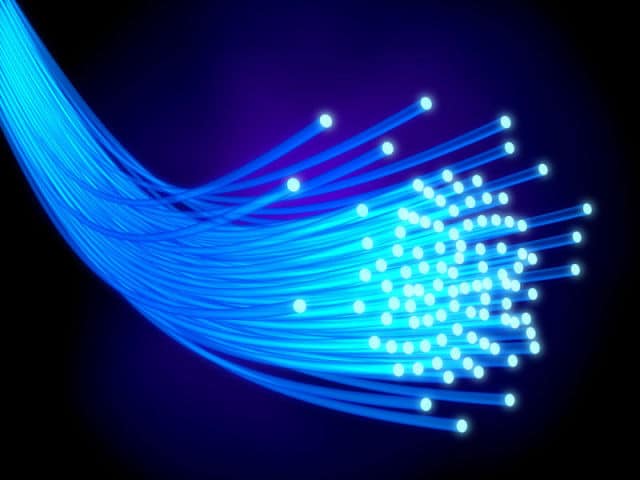Fiber optic technology was a breakthrough in the field of communication and it’s is still making news about how it gives an Internet speed up to 10x faster than DSL. When it was first made commercial in the 1980s it was mainly used by phone companies and businesses for telephones.
Now in the Internet age people have been demanding faster Internet and bigger bandwidth and fiber optic has proven to be a whole lot better than traditional cable and DSL technologies. Today all Internet service providers offer fiber-based internet optics plan.
The development to improve its capabilities is still ongoing right now as the demand for an even faster and stable Internet is on the rise, with consumer fiber broadband packages reaching 700 Mbps. In 2014 there was a report about a new technology that enables fiber optics to send data at speeds up to 21 times its current ability.

Called “multicore fiber optics” it is compared to “turning a one way road into a seven-lane highway” because fiber optic strands usually have one core where light signals pass through. In a multicore fiber, an optic fiber has several cores where light signals can be sent, increasing the rate of data that can be sent.
As of now it is still in development but based on the Journal of Lightwave Technology, 34th volume, published in January 2015, they already expected it as a good candidate for overcoming the current optical communication system’s capacity limit.
In fiber optics broadband, like any other broadband types, there is a need to regenerate the signal being sent because it deteriorates as it travels along a medium, from copper wires to glass, weakening the signal or creating noise and distortion to it, making it unreliable.
To keep that from happening a device must repeat the signal every few hundred miles or so. For fiber optics, this happens every 60 miles. But in 2015 researchers were able to find a way to increase the accuracy of data via a frequency comb which uses signals that are precise and spaced evenly to encode information before it is transmitted, enabling them to transmit data over farther distances without the need for data to be regenerated.

This would also increase the capacity of sent data and is said it might make it less expensive compared to other networks as the need to renew the light signals is reduced.
Another pending advancement in fiber optic broadband technology is the increase in information rates sent via coded modulation. The report, published in 2016, stated that by sending different pulses of light at different frequencies, creating a so-called “super-channel”, all at once and capturing the wide range of frequencies via a special receiver, a technique similar to that used in sorting out wireless signals, they are able to increase the speed data of up to 1.125Tbps.
That’s 50,000 faster than the average broadband speed. As of now this technology hasn’t been applied yet, but the scientists at the University College London are said to have developed a new fiber optic equipment for that purpose.
With all these incoming new improvements, one might wonder how much it will cost in the future, since a fiber broadband subscriber already pays hundreds of dollars a year for the current technology. The truth is we’ll first have to wait and see which of these first gets into commercial use. Each report hasn’t really given a price tag. In fact it might not even reach the phase where it can be released to the public if it turns out that it costs too much to be rolled out.
But if more speed is going to give you the edge to compete in your favorite online games, or to give your company the ability to compete in the global market, would you even care abut the price?













Leave a Reply